Fitbit Versa 3 Review
The Versa series is back
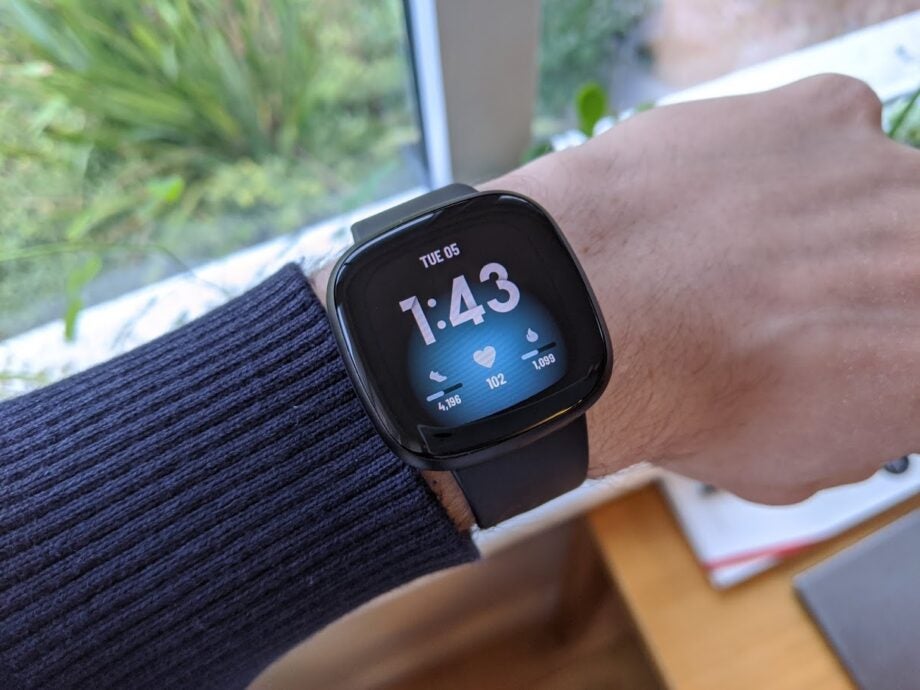

Verdict
Fitbit finally rights the wrongs of the Versa 2 via some much-needed course correction in the superior Fitbit Versa 3. Now boasting built-in GPS tracking, the Google Assistant and a longer battery life, all without a price increase, the Versa 3 is one of the best fitness trackers you can buy for under £200. The Fitbit ecosystem could still do with a lot of work, and the need for Fitbit Premium does jack up the price in the long-term. Nevertheless, the Versa 3 does enough right to earn a recommendation.
Pros
- Feature-packed for the price
- GPS is finally here
- Six-day battery with intensive use
Cons
- Fitbit’s apps and app store still need work
- The step count is just too eager
- Still no support for offline Spotify
- Fitbit Premium is essential for getting your money’s worth
Key Specifications
- Review Price: £199
- Alexa and Google Assistant enabled
- Built-in GPS and GLONASS
- Six-plus day battery life
- Offline music storage (Deezer and Pandora)
- Onboard speaker
- SpO2 tracking
After dropping the ball with 2019’s miserly updates, Fitbit is back with the next device in its most popular series of wearables – and with the upgrades we’ve been waiting for – in the Fitbit Versa 3.
Of the few positives that can be obtained from looking back at 2020, it can definitely be said that the year presented a great course correction for Fitbit. Despite the company’s enviable brand recognition, Fitbit has struggled to deliver a consistently stellar user experience across its various devices over the past few years.
While the Fitbit Charge series has gone from strength to strength, the Fitbit Ionic never really took off as the great Apple Watch alternative it intended to be – and 2019’s Fitbit Versa 2, despite being just shy of £200, failed to deliver key features such as built-in GPS tracking.
With the recently released Fitbit Sense, and now the Fitbit Versa 3, it appears as though Fitbit has managed to turn its luck around. In particular, the latter device has managed take on a bounty of upgrades whilst maintaining the affordable price of its predecessor.
Related: Best Smartwatch
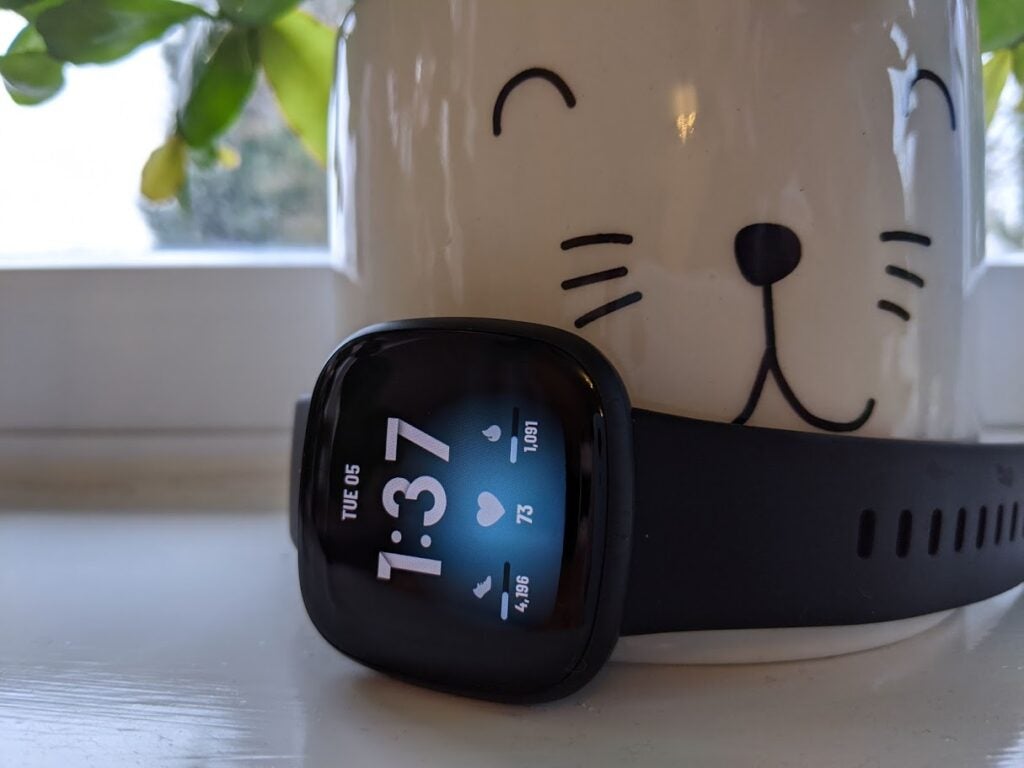
Since this new souped-up Versa still plans to retail at just £199, I’d be lying if I said it didn’t have my attention as much as the Fitbit Sense – at the very least to see just how much the device could shake up the marketplace for mid-range fitness trackers.
Design
Nowadays, smartwatch design has branched off into one of two camps: the Apple-inspired rectangle; or the traditional rounded circle. However, the Versa series has always presented something a little more quirky – a design that arguably harks back to the classic smartwatch of a bygone era, the Pebble Time. For those accustomed to those aforementioned modern designs, the Versa 3 might feel a tad retro, but that’s exactly the reason I enjoy wearing it.
Related: Best Fitness Tracker
Sporting the same rounded edges and boxy aesthetic we’ve come to expect, the Versa 3 doesn’t change things all that much – but it has done away with any and all physical buttons. Interactions with the watch are now largely relegated to the touchscreen, but there’s a small dip where the left-hand home button used to be, which can now be squeezed to perform the same action. It works just as well as having the physical button present, but the Versa 3 looks sleeker because of its omission.
Unlike the Fitbit Sense, which partially uses stainless steel to house its exclusive sensors, the Versa 3’s case is made up entirely of aluminium. While this isn’t surprising given the price of the Versa 3, is must be said that the standard Black Aluminium option lacks any discernible flair. As such, if you want a smartwatch with a punch then I’d recommend opting for one of the other colours.
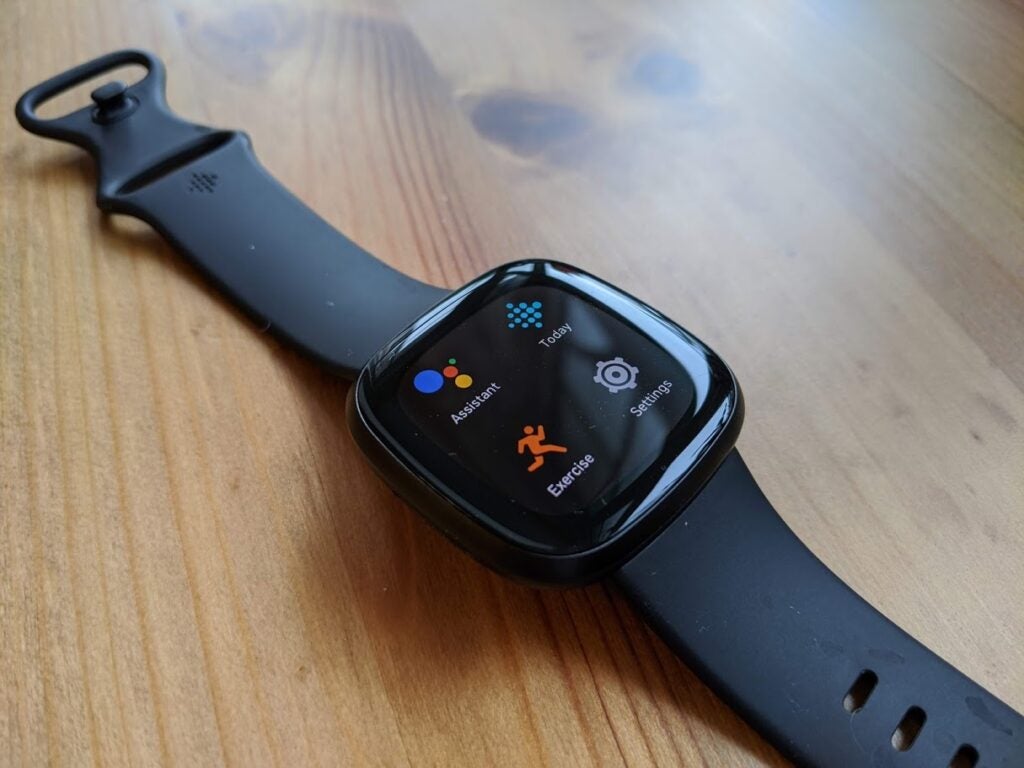
For the newest Versa, Fitbit has done away with the traditional single-pronged clasp watch strap of old, replacing it with a loop-through strap. While the new design isn’t as stylish as the previous band, its minimalist approach does feel more in tune with the overall look the Versa 3 is going for.
Related: Best Fitbit
Screen
Much like the design before it, the Versa 3’s screen has received a minor update, although you’d be forgiven for not immediately noticing the improved dimensions on a screen this small. Compared to the Versa 2, the Versa 3 has a 1.58-inch display with a 336 x 336 resolution to boot, providing a clearer experience than the 1.39-inch 300 x 300 display of its predecessor.
Being almost identical to that featured on the Fitbit Sense, the display here is also a bit of a mixed bag. In everyday use, the screen is bright, colourful and easy to read when out on a run, plus its curved edges contribute to that same sense of retro quirkiness that I enjoy about the Versa series.
What’s problematic, however, is that some apps aren’t designed with these dimensions in mind, and so content sometimes gets cut off at the corners. In addition to this, the Versa 3’s bezels are on the larger side of what you’d expect from a 2020-released smartwatch. Apple has come a long way with scaling back bezels and making the display larger – best seen with the Apple Watch 6 – and I hope that Fitbit can work out something similar with the Fitbit Versa 4.
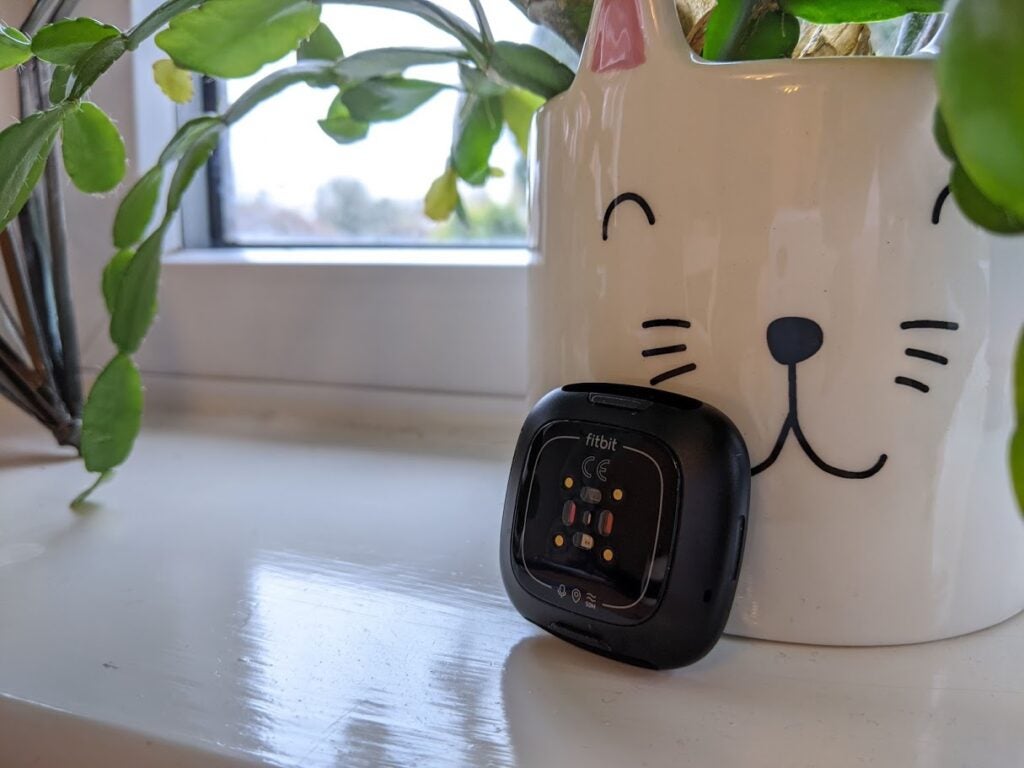
Features
One of the big new features to come to the Fitbit Versa 2 was Amazon’s very own AI companion, Alexa, but compared to a smart speaker the experience was fairly limited in that responses were text-only. For the Versa 3, not only has Fitbit added the Google Assistant, but there’s also a built-in speaker for audible responses. Strangely, however, it’s only Alexa thus far that makes use of the speaker – Google Assistant responses are text-only (although it’s worth noting that these features weren’t available at launch).
Arguably, the biggest talking point of the Versa 3 is the inclusion of GPS (finally), which was sorely lacking on the Versa 2. At this point, the idea of leaving your phone at home and tracking a run entirely with a wearable device has become commonplace, but in the Versa 3 it works brilliantly in tandem with the watch’s offline music storage capabilities.
From a technical standpoint, the Versa 3 feels like a much-needed step in the right direction. Unfortunately, it’s bogged down by the same old problems with the Fitbit ecosystem that have yet to really be addressed. Fitbit Pay is still widely unaccepted by most major banks, making it a fairly redundant feature for the majority of users, just as offline music storage – while slick in operation – is still tied to just Deezer in the UK and Pandora in the US. Is it really that difficult to get Spotify in the mix?
Another glaring issue is the Fitbit app store, which seems to be stagnating. Given that Fitbit puts far more of an effort into developing its fitness and health-tracking technologies, I’d completely understand if the app store didn’t quite reach the same heights as what’s available on the Apple Watch and Wear OS devices. However, aside from Uber, Spotify and Strava, the Fitbit app store is sorely lacking in other big name brands utilising its service. Here’s a bizarre example: I made great use of The New York Times app on my Fitbit Sense, but for whatever reason the app just isn’t available for the Versa 3 at the time of writing.
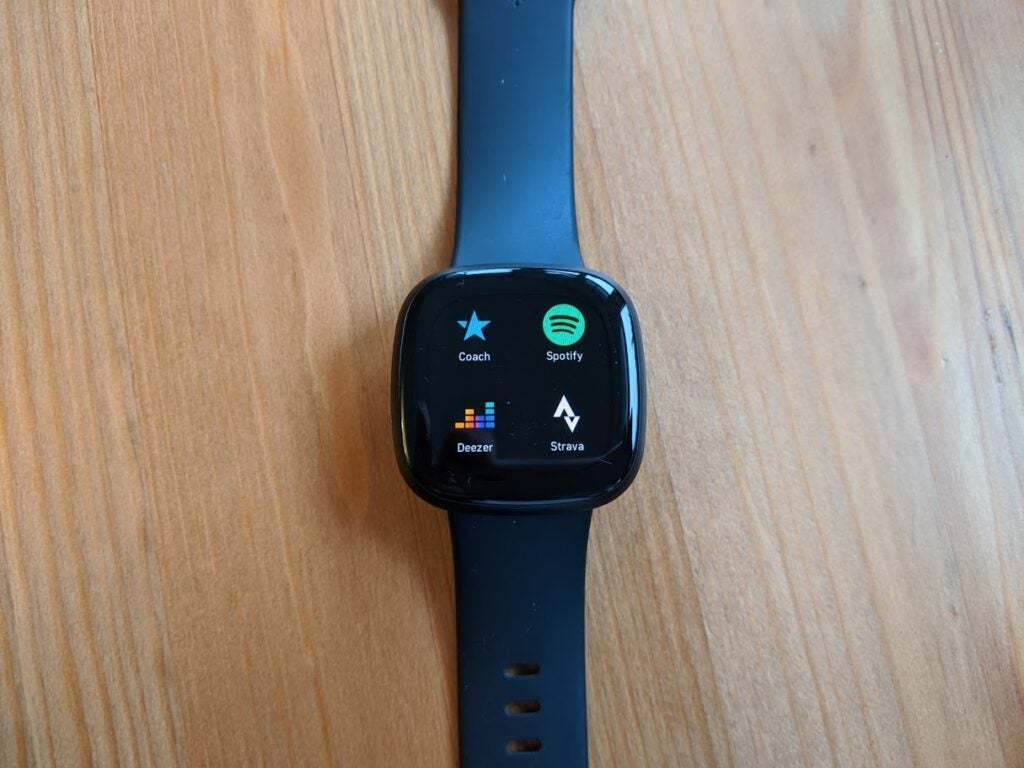
Fitness tracking
Keeping track of your health and fitness has always been a strong point for Fitbit, and the Versa 3 keeps that trend going. Working in its favour is the clean UI offered on both the Versa 3 and the Fitbit app which, having returned to after a lengthy break, I can appreciate even more for having one of the easiest systems to wrap your head around.
For its 2020 line of devices, Fitbit has shifted its fitness markers to be more in line with the American Heart Association’s recommendation of 150 minutes of moderate exercise per week, with its Active Zone Minutes (AZM) calculator. For every minute spent actively burning fat, you’ll receive one AZM, and for every minute spent engaging in cardio, you’ll earn two AZM. It’s a devilishly simple system, but one that allows you to be flexible with your routine, offering the understanding that on some days it will be more difficult to find a moment to exercise.
The AZM system sits on top of well-known features that make the Fitbit app a pleasure to use, including the wellness report that depicts a detailed breakdown of your workout, heart rate and sleep performance over a period of time. Speaking of sleep, the Versa 3 does a great job of keeping your circadian rhythm in check, and if you’re the type of person who struggles to maintain a regular sleep cycle, the various sleep programs offered in the Fitbit app could be just the thing you need.
The Versa 3 also packs Fitbit’s new PurePulse 2.0 technology, which should allow for more accurate heart rate readings than ever before. While the majority of readings were fairly accurate most of the time, the Versa 3 does have an issue with tracking high BPM levels during moments of peak exertion, however.
During outdoor runs, for example, the Versa 3’s highest tracked BPM came in at 186, even though at one point my accompanying chest strap monitor recorded a high of 196. It’s not a dealbreaker, but it’s definitely worth taking note of if you’re the type of person who regularly hits the peak zone during workouts.
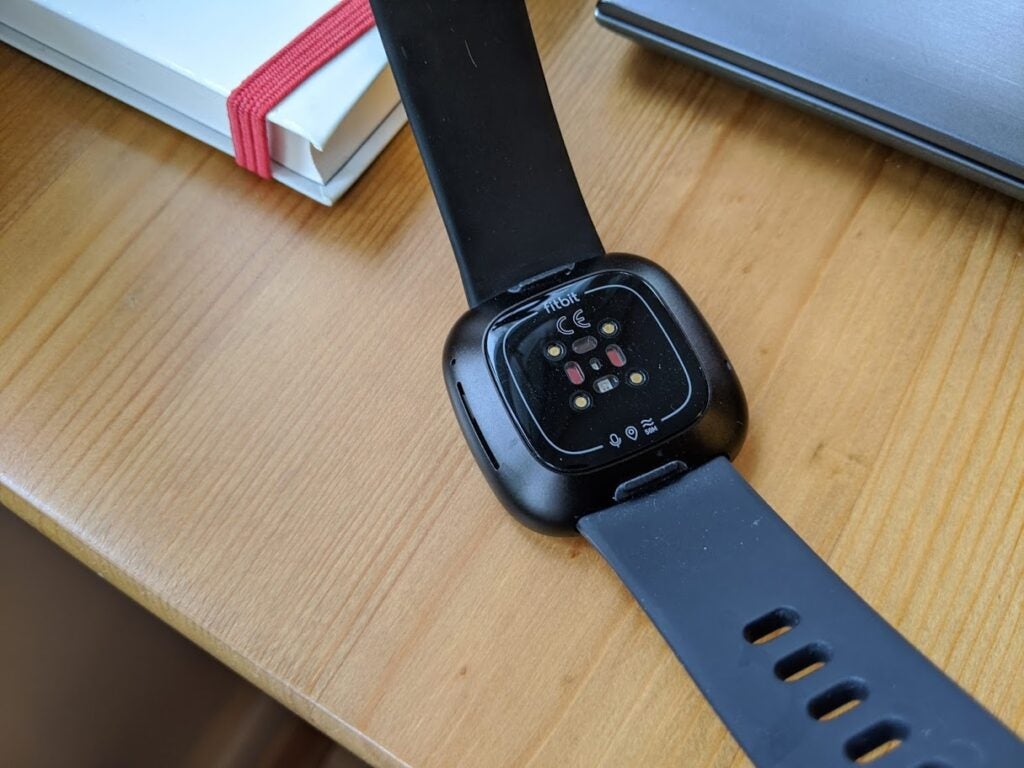
While Fitbit’s tracking capabilities are a blast to use, they do come at a cost in the form of Fitbit Premium. Key features such as the guided workouts, meditation sessions and sleep programs are hidden behind this paywall, and while there’s a three-month trial included with the Fitbit Versa 3, the £7.99 a month cost for the service could be a nightmare if you’re on a budget.
There’s also the issue with the Fitbit Versa 3’s pedometer, a problem we’ve seen before with the Fitbit Sense. While hitting my 10,000 daily steps wouldn’t have been an issue pre-pandemic, it’s been a real task since – but the Versa 3 has claimed I’ve hit that goal and then some every day. Of course, as a workaround I’ve simply upped my daily requirement, but it’s still a faff and certainly an off-putting feature for anyone who puts a great deal of importance into their step count.
Battery life
Given its intent to be worn as a 24/7 tracking device, a lacklustre battery life could have been fatal to the Versa 3. Luckily, Fitbit has stayed true to its reputation, with a quoted six plus days of battery life for the latest Versa.
Even better, I found that this claim mostly lined up in my testing. Taking the Versa 3 off charge on a Tuesday evening and tracking a workout on each day of use (including three GPS tracked runs), it wasn’t until the start of the working day the following Monday that I leapt for the nearest charging point.
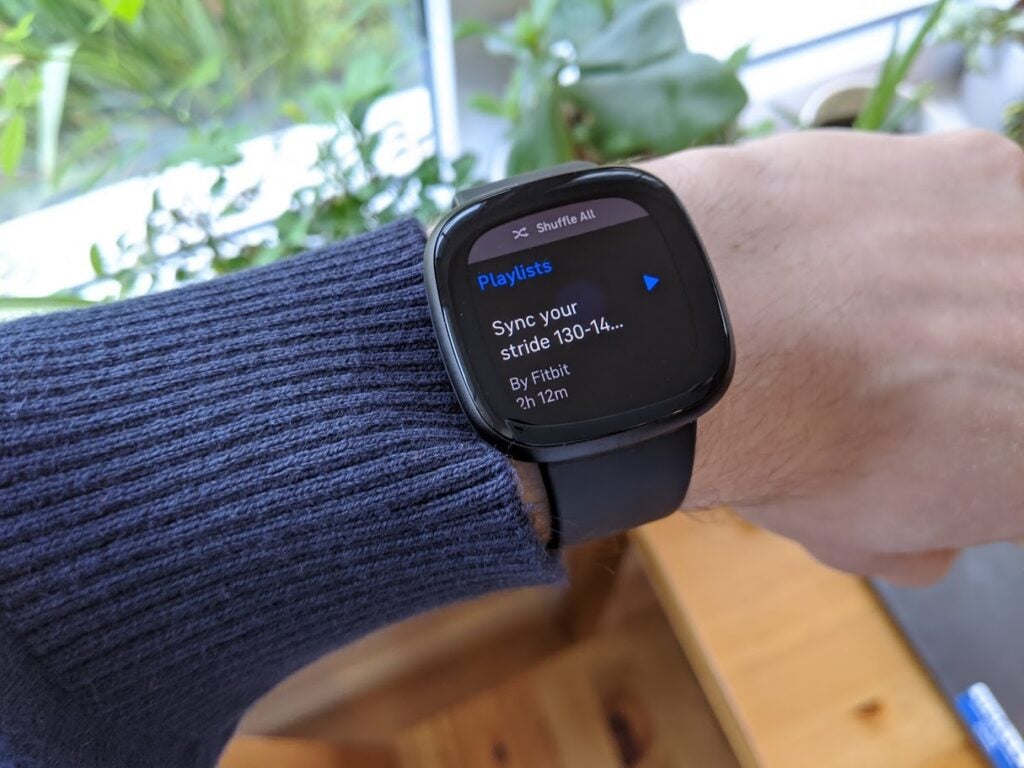
This is fantastic news for the Versa 3; not only does it mark a slight improvement over the Versa 2, but it also means that the device has one of the best batteries available within its price range.
Should you buy it?
In spite of all the new features that have been added to the device, Fitbit has managed to keep the price under that £200 mark – and I’d argue that the Fitbit Versa 3 presents one of the best value fitness trackers you can buy in that price bracket.
Offering built-in GPS tracking, offline music storage and a six-day battery life, there are very few fitness trackers (or even smartwatches) that can offer the same feature set without presenting a far higher asking price to the consumer. Plus, being £100 cheaper than the Fitbit Sense, the Versa 3 is definitely the better option for most people.
However, as has been the case with the Fitbit Sense, the Versa 3 is let down by Fitbit’s lacklustre app store, the limitations of Fitbit Pay and an offline music system that doesn’t include Spotify. There’s the huge caveat of Fitbit Premium to consider as well, since the paid-for service is pretty much essential to make the most out of any Fitbit device in 2021.
If you can look past these issues, though, then there’s a lot to like about the Versa 3, which offers a much-needed update over the previous entry.


